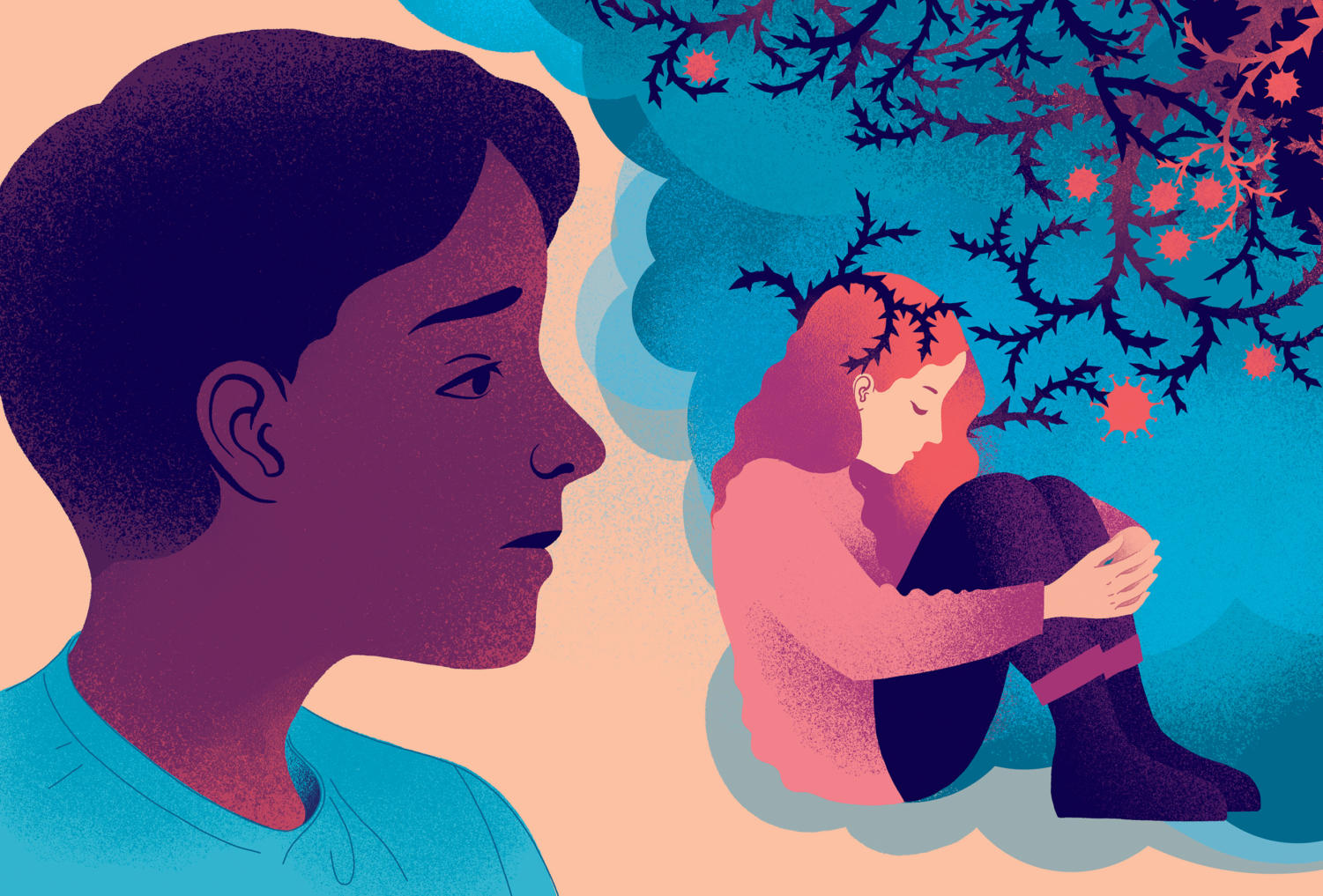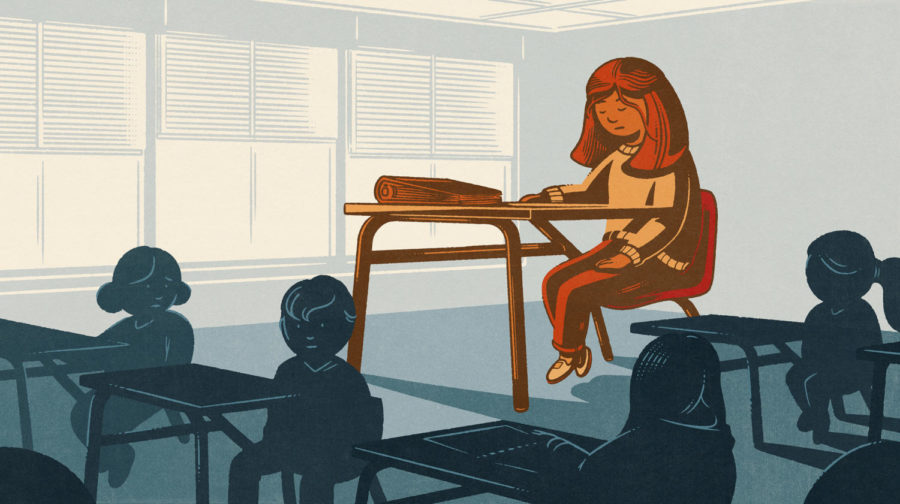Your donation will support the student journalists of Bettendorf High School . Your contribution will allow us to purchase equipment and cover our annual website hosting costs.
The impact of social media on mental health
September 15, 2022
In 2019, mental health disorders surpassed physical conditions as the primary source of student impairment. More than 1 in 3 high school students have experienced persistent feelings of sadness or hopelessness, a statistic that has increased in the last 10 years by 40 percent.
Studies show that student stress has worsened due to a multitude of factors, including social media, the COVID-19 pandemic, and family issues–all of which have led to more reports of a lack of interpersonal interaction.
Over 20 percent of students at Bettendorf High School feel severely affected by their mental health with 75 percent of BHS students often feeling overwhelmed by anxiety and depression. In addition, some students feel obligated to pressure themselves and prepare for the next phase of their life as well.
“We put ourselves in very competitive environments that have high risks whether it’s sports, music, or academics,” said sophomore Finn Boyle. “High school is the time where we’re looking to prepare ourselves for that next step for the rest of our lives and that can seem very intense and stressful.”
Students feel overwhelmed by their new environment and stimulated by the presence of social media. This will always be a reality in students’ lives so students need to figure out how to co-exist with it.
“Today is a lot different to what it used to be like for our parents’ generation because we have more access to social media,” said Senior Ammiah Wynn. “We have our own experiences and challenges when it comes to school, sports, and extracurriculars.”
Over 65 percent of BHS students believe that social media has both a positive and negative effect on mental health. Although Snapchat, Instagram, Tik Tok and leave adolescents unhappy, in reality, it is the pace of a technologically driven world and its effect on young adolescents. With a click of a button, vast quantities of data and information move across the world wide web, and adolescents feel pulled in.
Students’ parents feel pressured to have their kids keep up by making them aware of other students’ academic and athletic merits or knowing what is going on in our world’s climate. Young people still look to the internet as an escape and to feel more comfortable in their skin. Students see the negative impacts of social media presence within themselves and feel like they’re missing out on what their friends are doing.
“I think of myself scrolling through Instagram or Snapchat, and I say ‘I wish I could be with them,’ said Boyle. “It’s that FOMO (Fear of Missing Out) that makes us question ourselves saying, ‘why aren’t I doing this?’”
Social media isn’t telling students that because that is a personal mindset. Students jump to conclusions because of our insecurities that what we’re doing isn’t good enough. Finding appreciation for where you are and what you’re doing would alleviate many of those negative impacts social media has.
Donna Carlson, the primary nurse at BHS, believes that social media has its place and to keep in touch with friends but students get wrapped up in their self-worth.
“It’s always how many snaps you have or how many likes they get and we are behind because we have a generation of kids and parents that aren’t prepared for being more cautious,” said Carlson. “Social media will always be a part of our lives so we need to figure out how to co-exist with it.”
The impact of puberty on mental health
Over 45 percent of BHS students feel that there are not enough resources to help teenagers deal with their mental health so there is room for improvement. Schools need to equip people with tools and not a diagnosis since there is a real issue with just giving people labels. It is a choice to disclose this private information so adults must support adolescents with medication and coping mechanisms.
Students must go out into the big world and learn how to process their feelings and emotions through therapy and education. Donna Carlson, the primary nurse at BHS, has recognized this growing issue and knows students need to respond before it’s too late.
“Health care is in a challenging situation because we need to know how to get providers and it takes time to build a repertoire of providers to help prescribe medication or schedule meetings,” said Carlson.
Although students face a challenging situation, counselors and doctors have realized that puberty is happening earlier as compared to a century ago. Girls and boys are following similar paths of earlier maturing and a lot of it is happening within the brain. Because of this, young people are dealing with a range of complex emotions at younger ages than ever before.
In addition, Junior Jay Signer believes that boys and girls should learn about the different sexes and how they go through puberty differently as well.
“There is no concrete way to tell kids, ‘this is what’s going to happen to you’ because we all go through puberty differently,” said Signer. “Kids should have a trusted adult to show them the ropes and know what they’re going to experience.”
Having a trusted adult that helps students be more aware of social information is the best way to figure out how to fit into an increasingly complex world. Counselor Amy Harksen believes Bettendorf needs to educate kids at a younger age because children are experiencing puberty at younger ages.
“Upper elementary is where we’re seeing this now and so much is going on in middle school and so I don’t think we’ve caught up with informing parents either,” said Harksen. “There is a rush of all types of hormones coming in and the brain isn’t fully developed. You have these changes happening to your body and teens aren’t equipped to handle it because we’re not getting enough education out.”
To address this, student services are going to be looking at student behavior this year and use more opportunities to select a few mental health issues and remove the stigma as well.
“If we can offer smaller group settings to help all kids feel more normal and say ‘how a lot of people have anxiety,’ that doesn’t mean there’s something wrong with you, it means you’re normal. I think we are looking to do better and we are doing better,” said Harksen.
Education on mental health can deconstruct the stigma
Human hand helps a sad lonely woman to get rid of depression. A young unhappy girl sits and hugs her knees. The concept of support and care for people under stress. Vector illustration in flat style
In a recent survey, over 50 percent of students do not feel comfortable talking about mental health and reaching out for help. BHS has started the 7 mindsets which are new social-emotional learning (SEL) lessons. These lessons are conducted during advisory as a way to help present students with a way to know about mental health. The bigger issue rather than resources is the stigmatism surrounding mental health.
Some students may harbor internal judgment of people who say they go to therapy or go see a counselor because they can’t do this or that. The biggest step students can take next is to alleviate some of that stigmatism.
In addition, Donna Carlson, the primary nurse at BHS, hopes more teachers will be willing to incorporate the seven mindsets into their classrooms and PRIDE times.
“The philosophy of SEL is a good place but starting younger with kids is where we should be because we need to teach people to co-exist and cope with their mental health and not let it hamper their ability to function in life,” said Carlson. “We need to teach people how to live with it and provide medications and accommodations.”
In addition, teachers, counselors and administrators implore students’ parents to educate their kids. Each household is different and talking to trusted adults can show students the ropes and help guide them in their experience in high school. Students’ number one job is to not only learn but to be the best version of themselves they can be.
Every student has a brain that needs to be cared for in similar ways to their physical well-being. Mental health illnesses can be manifested in some physical ways through nausea, headaches, fatigue and shortness of breath.
Senior Ammiah Wynn believes that the mental health of every student at BHS is important and that students must approach each other with empathy and honesty.
“We are getting more in touch with making it known but it needs to be something that we can talk about,” said Wynn. “When talking about mental health it’s always an awkward conservation but making it normal in schools through education is good because students will speak openly if they have the chance to.”
It is always okay to take a break and relax. Students need to pace themselves and then push themselves a little over the finish line to be successful. The biggest thing is to realize that students are not alone. Mental health is an issue that affects everyone, whether it’s positive or negative. Getting over that stigma and everyone’s opinions is the first step to then opening up to others. The more common the conservation is, the better.
Junior Jay Signer advises students to remind themselves that their mental health doesn’t define them and to be aware of themselves and their surroundings.
“Tell yourself to breathe, focus on the things you can change, and not dwell on the things you can’t,” said Signer. “Take it one day at a time, focus on the positive, you’re human and it’s okay not to be okay.”


